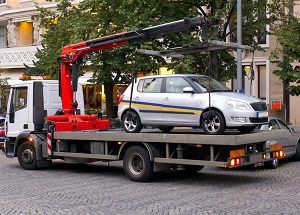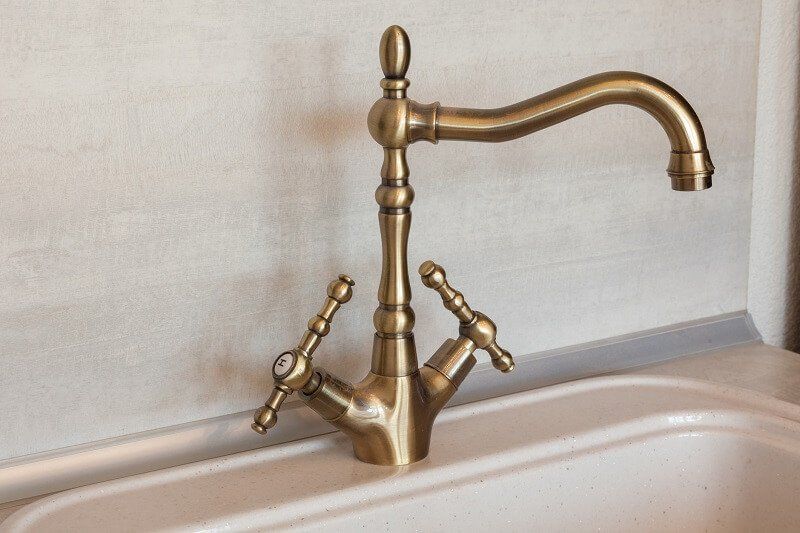How To Do A Furnace Tune Up To Save On Energy & Repair Bills
How To Do A Furnace Tune Up To Save On Energy & Repair Bills

With winter coming, you're probably thinking about how much money you'll be spending this season to keep your home warm. Here's a way to save some dough! It's time for an annual furnace tune up - don't wait until something goes wrong. Our team of certified technicians are out in full force to make sure everything is running smoothly before the cold weather comes in full force. Tune ups are easy, fast, and can save you big bucks on energy bills!
Schedule A Furnace Tune Up
With 24 Hour On Call HVAC Today!
Schedule Service
What Is A Furnace Tune Up?
An HVAC specialist performs a furnace tune up to ensure that all of the heating system's parts are in good working order. They inspect your heating system and use a variety of tools to clean and adjust each component as well as test its efficiency. Regular maintenance of your HVAC system will prevent breakdowns, increase efficiency, and extend the system's lifespan by preventing dirt and corrosion, and replacing valuable parts before damage becomes widespread.
What Are The Benefits Of Furnace Maintenance?
Furnace maintenance is a great way to keep your furnace running smoothly and efficiently. Have you been putting it off? If so, you're not alone. Unfortunately, most people don't realize the importance of regular maintenance until there's a problem with their equipment that can't be fixed right away. If you don't get routine HVAC maintenance, there's no telling how much money you could end up spending down the road because of your HVAC system!
A Furnace Tune Up Prevents Repairs
A furnace tune up can be the difference between staying warm in winter or shivering without heat. A furnace tune up, also known as a heating maintenance, includes an inspection and cleaning of your system to ensure each component is working at its best level. At this point, an HVAC technician will be able to determine if any parts need to be replaced before they fail, such as an old and rusted heat exchanger, or a failing blower motor. Furthermore, cleaning your furnace regularly reduces the likelihood of your HVAC system failing due to a dirty air filter or clogged drain line, as well as catching any potential problems before they become more significant.
Maintenance Extends Your HVAC System's Lifespan
Lack of furnace maintenance kills your furnace
If you want your heating system to last as long as possible, it's important that each of its components are clean. Grime and dirt make it more difficult for your heating system to keep up with your household needs, which contributes to early deterioration. Moreover, the breakdown of one part causes the breakdown of the rest of the system. Routine furnace maintenance keeps your furnace working in optimal condition for as long as possible.
A Furnace Tune Up Lowers Utility Bills
All of the parts in an HVAC must be clean and working well for them to maintain their performance level. When you have a dirty or worn out furnace, it can make your heating system work harder. As soon as your furnace starts putting in extra work, you will see your energy bill increase. Furnace tune ups maximize the efficiency of your HVAC system by ensuring your furnace does not struggle to meet the demands of your household.
A tune up is great time to learn more about your HVAC system, prevent repairs, and lower your energy bills. But if you are in the midst of buying a home, you are not authorized to conduct work on that property yet. Unfortunately you risk You running into an ancient HVAC system, which is full of problems. That's why a separate HVAC Inspection is just as important as the preliminary home inspection. If your are a currently in the home buying position learn more here. You will not be able to DIY a HVAC inspection since you are not the property owner, although it is critical to perform a thorough check-up of the HVAC system with an HVAC inspection before you move into a new house.
How To DIY Furnace Tune Up:
Routine maintenance is essential to maintaining your home's heating and cooling systems. So you may be wondering, can I provide routine maintenance for my furnace? Yes, and it's really not that hard. The homeowner has many options when it comes to maintaining the condition of their home heating system. Let's find out more!
Step 1: Remove Furnace Door
Removing furnace door
To clean the inside of your furnace you will need to remove the furnace door. You do this by unscrewing the panels with a screw driver.
Step 2: Change Furnace Filter
Change filter to promote proper air flow.
The easiest way to take care of your furnace is to change the furnace filter at least 4 times a year. For households with a pet or members who suffer from allergies or asthma, air filter changes should take place every six weeks. You should also check that all registers and vents are open and not blocked in order to promote airflow. Learn how to change your furnace filters with this handy guide here.
Step 3: Inspect Flame
Inspect Flame. If the flame is orange call an HVAC Pro ASAP!
Take a good look at the burner flame inside your furnace. What does it look like?The burner flame inside your furnace should be blue, and if it's not then there is a problem. Yellow or orange flames indicate dirt in the burner which can lead to other problems as well such as lowering efficiency of combustion (so less heat). If you notice a flickering flame - this might mean not enough oxygen being mixed in to complete combustion, which could result in major issues down the road like gas leaks!
Step 4: Vacuum Inside Furnace
Vacuum the furnace cabinet to get rid of dirt and dust.
The next thing the homeowner can do is to vacuum the inside of the furnace, which is called the cabinet. With a vacuum hose carefully suck up any debris, dirt, or dust. Be careful not to hit or suck up any other internal components.
Step 5: Clean Condensate Line
Pour water down the condensate drain line to test if it is clogged.
Another preventative maintenance step homeowners can take is to inspect and clean their condensate line. The condensate line is a white pipe on the side or front of your furnace. It drains the condensation from your AC and furnace. You can open the top and see if it appears dirty or cracked. Next pour water down the top to assess whether the water drains properly or if it is clogged. Clean and unclog the condensate line if necessary to ensure that your HVAC system doesn’t leak water. If you find your furnace leaking water find out what to do here!
Step 6: Close Damper
When it starts getting outside cold outside it's important to close your upstairs damper. Do this to take advantage of the property of heat rising. Science is the key to efficiency.
What Does A Furnace Tune Up Include From An HVAC Pro?
HVAC specialists are master craftsmen, who take pride in their work. You can read an in depth list of heating maintenance tasks from the AC Contractors of America here. But to get the main idea keep reading below!
Furnace Cabinet Inspection & Cleaning
Tightening a loose wire connection.
The cabinet holds many of the main components in the heating system. During a furnace tuneup, the structural integrity of the furnace cabinet will be inspected. The HVAC technician vacuums the inside of the cabinet to remove dirt and dust, which are corrosive elements. While inside the cabinet the HVAC specialist meticulously cleans, adjusts, and tests the blower wheel, safety switches, and numerous electrical connections, like the control board. In the event that cabinet fasteners, cabinet panels, blower wheel, safety switches, control board, or any electrical connections are damaged or loose, the HVAC technician will notify the homeowner and repair it.
Gas Combustion Inspection For Gas Furnace Tune Up
The HVAC pro assesses the the condition of the gas valve and makes adjustments if needed. The HVAC technician will determine if there is a gas leak or CO present. Additionally, they will assess if the CO detectors in home are functional. This is critical for your safety since gas is explosive and Carbon Monoxide poisoning is fatal.
Checking for gas leak.
As part of checking for the possibility of a gas or CO leak, the HVAC pro will inspect the flue venting. And next, they examine the condition of the heat exchanger to see if there are any rust, cracks, or holes evident. When your heat exchanger is cracked, Carbon Monoxide seeps onto your home posing a fatal risk to all residents. Learn how to tell if your heat exchanger is cracked here.
Checks for cracks in heat exchanger
Additionally, the HVAC Specialist examines, tests, and cleans the burners, igniter, inducer motor, and pilot assembly.
HVAC Pro checking the efficiency of the internal electrical components, including the inducer motor.
Condensate Inspection & Removal
The HVAC technician will examine the visible condensate drain piping, traps, drain, and drain pumps for proper operation. They will clean, repair, or replace as necessary.
Thermostat Evaluation Performed For Heating Maintenance
HVAC professionals check the temperature calibration, clean the connections, and check if the batteries need to be changed. When your thermostat starts acting out, learn basic troubleshooting methods here.
Airflow Assessment For HVAC System Tune Up
Checking static pressure to assess airflow
Air flow plays a critical role in how comfortable we are in our home. A furnace's efficiency decreases drastically without proper airflow. During a furnace tune up by an HVAC specialist, they will assess the efficiency of your air flow by performing tests to determine the static pressure. Next, they look over your duct work, make sure all vents and registers are open and working properly, and close your damper. Also, if you our gold member, they certainly make sure to change your furnace filter! A simple step that goes a long way.
Furnace Tune Up: System Health Report
The HVAC specialist will provide homeowners with a System Healthy Report at the end of every furnace tune up. It contains a thorough account of everything your technician examined and its current status.
Prepare For The Cold
With 24 Hour On Call HVAC
Schedule Service
How Often Do I Need A Furnace Tune Up?
Routine furnace maintenance should be performed once a year. Get your annual furnace tune up right before the heating season begins to avoid needing a furnace repair during the most critical time of year.
How Much Is Furnace Maintenance ?
HVAC Tune ups can range in price from $40- $200. Although, low-cost furnace maintenance typically does not include an extensive and in depth furnace inspection and furnace cleaning.
How Long Does A Furnace Tune Up Take?
A heating system tune up can take an estimated 1-2 hours. The length of the furnace tune up depends on the extent of the maintenance being performed and the overall condition and cleanliness of your HVAC system. Be aware that if an HVAC contractor completes the heating maintenance in less than an hour, it likely is not an in depth evaluation.
Common Furnace Problems That Are Preventable With A Furnace Tune Up
Furnace Not Turning On
Common reasons for your furnace not turning on are a dirty or faulty pilot light, blower motor, thermostat or circuit board wiring. When an HVAC Pro services your HVAC system, they clean and inspect the efficiency of the pilot light, blower motor, thermostat, and circuit board. Therefore, your home's furnace not turning on could have been caught ahead of time or prevented altogether. Explore more factors that lead to your furnace not turning on here. And if it's your pilot light that is giving you trouble, we have a few industry tips for you here.
Furnace Blowing Cold Air
During a heating system tune up, an HVAC contractor will catch the main culprits that cause your furnace to not blow warm air but blow cold air. Typical reasons your heater is blowing cold air include a dirty or faulty thermostat, internal control board, or filter. An HVAC Professional will clean and tighten all the wires in your thermostat and internal control board, as well as replace your filter. You significantly reduce the risk of your furnace blowing cold air with a furnace tune up. Learn more about your furnace blowing cold air here.
-
Popular Cities
-
Popular Category










